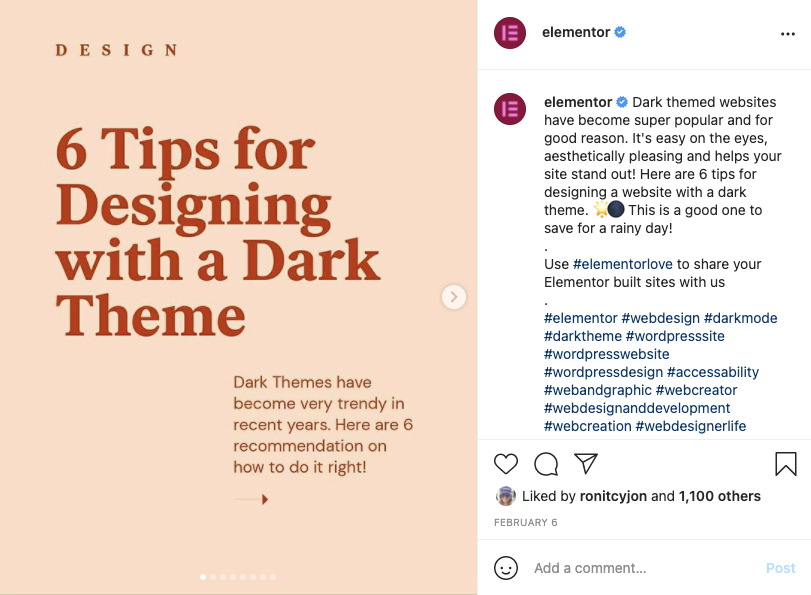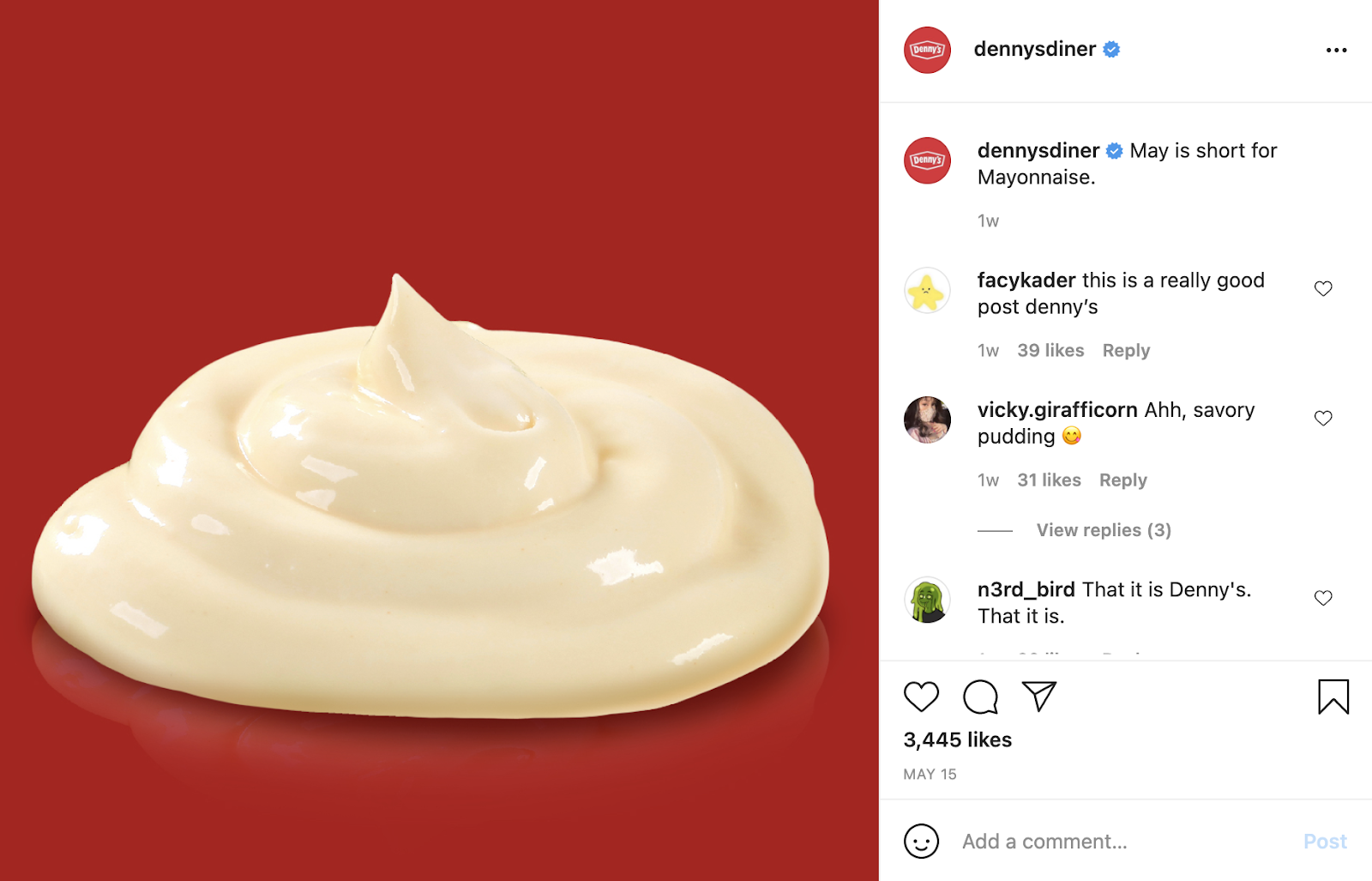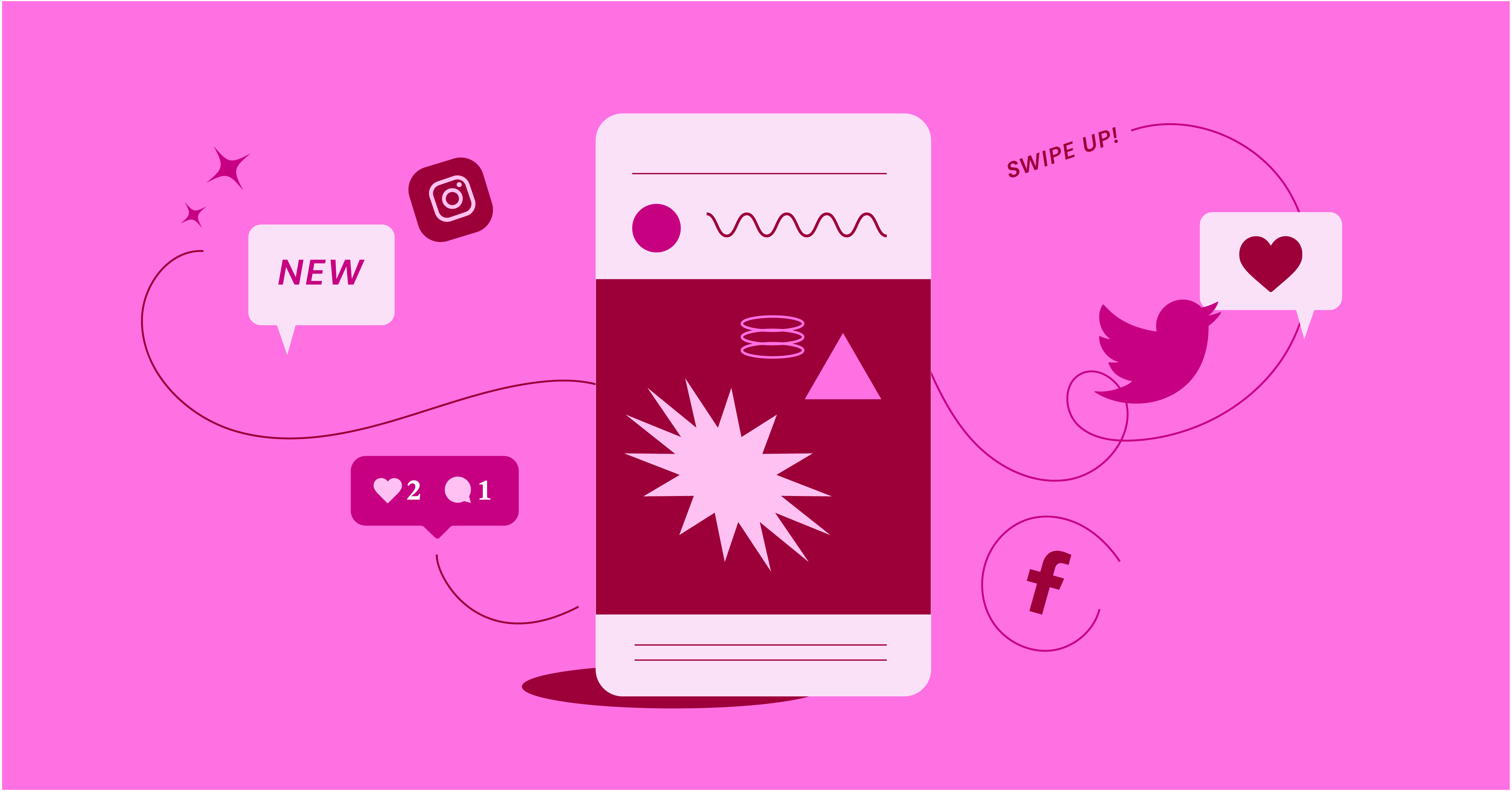Table of Contents
Hashtags are like signposts on Instagram. They group your content so people can find it when they search for topics they like. When you use them well, they can:
- Help more people see your posts
- Attract your ideal audience
- Get more likes and comments
In this guide, we’ll explain hashtags, show you how they work with Instagram’s system, and give you tips to use them well. By the end, you’ll know how to use hashtags to get more eyes on your Instagram posts.
What Are Hashtags?
Hashtags are words or phrases that start with a “#” symbol. They act like labels for your posts on social media, especially Instagram. They help sort your content so it’s easy to find.

How Hashtags Have Changed
Hashtags first showed up on Twitter in 2007 to group similar tweets. Now, they’re used on many platforms. On Instagram, hashtags have become key for finding new content, engaging with others, and building communities.
Types of Hashtags
There are different kinds of hashtags on Instagram:
- Brand Hashtags: These are unique to your business. They help create a community and make it easy for people to find your content. Example: Nike’s #justdoit
- Community Hashtags: These bring together people with shared interests. They’re great for connecting with like-minded folks. Examples: #travelphotography or #foodie
- Trending Hashtags: These are popular right now, often linked to current events or challenges. They can give your posts a quick boost, but make sure they fit your content.
- Niche Hashtags: These are for specific, targeted audiences within a broader interest. They might have fewer searches, but attract very interested users. Examples: #veganrecipes or #sustainablefashion
- Location Hashtags: These highlight where a post is from or about. They’re great for local businesses and travel content.
How Hashtags Work on Instagram?
When you add hashtags to your post, it shows up in those hashtag feeds. People can search for hashtags directly, find them on the Explore page, or see them used by others they follow. If your content is relevant and engaging within a hashtag feed, more people are likely to see it.
Why Hashtags Matter on Instagram
1. They Help More People See Your Posts
Hashtags connect your content to a wide network of users beyond your followers. By using relevant hashtags, your posts can appear in hashtag feeds and search results. This helps new people discover your content. Posts with at least one hashtag can get 12.6% more engagement than those without.
2. They Boost Engagement
Hashtags don’t just attract views; they spark conversations. When users find your content through hashtags they care about, they’re more likely to like, comment, and share. This tells Instagram that your content is valuable, which can make it show up even more.
3. They Help You Reach Your Target Audience
Think of hashtags as magnets that attract the right people to your content. By using specific hashtags, you make sure your posts reach users who are truly interested in your topic or industry. This leads to more meaningful interactions and a better chance of turning viewers into followers or customers.
4. They Build Community and Brand Awareness
Hashtags can help create a community around your brand. By making a unique branded hashtag, you encourage users to share their experiences and connect with others who like your products or services. This builds loyalty and turns customers into brand advocates. Using branded hashtags regularly also makes your brand more recognizable.
Understanding Instagram’s System
How It Works
Instagram’s system is complex and always changing. It decides what content users see based on many factors, including how people use the app, how much engagement posts get, and how relevant the content is.

How Hashtags Fit In
Hashtags play a big role in Instagram’s system. The system favors content that matches the hashtags used. This means if you use hashtags that truly reflect your content and appeal to your target audience, your posts are more likely to show up in relevant hashtag feeds and searches.
Tip: Avoid using popular but irrelevant hashtags. The system can spot this, and it might show your content less as a result.
How Engagement Affects Hashtags on Instagram
Instagram loves interaction. Things like likes, comments, saves, and shares are important. When your post gets a lot of engagement in a specific hashtag feed, it tells the system that people interested in that topic like your content. This might make your post show up higher in feeds or even on the Explore page.
Keeping Up with Changes
To stay ahead on Instagram, you need to adapt your hashtag strategy as the system changes. Regularly check which hashtags are working best for you. Try different combinations, watch for trends, and stay informed about any updates to the system.
Creating Your Hashtag Plan on Instagram
Set Your Goals
Before you start using hashtags, think about what you want to achieve on Instagram. Do you want to:
- Reach more people and get new followers?
- Get more likes and comments?
- Make more people aware of your brand?
Your goals will shape how you use hashtags.
Know Your Audience
To use hashtags well, you need to understand who you’re trying to reach. Think about:
- Who are your ideal followers?
- What content do they like?
- What hashtags do they use often?
By knowing your audience, you can choose hashtags that will catch their attention.
For example, if you’re a fitness brand targeting young adults, you might use hashtags like #fitnessmotivation, #gymlife, and #healthyeating. But if your audience is mostly experienced athletes, you might use more specific hashtags like #powerlifting or #crossfit.
Remember that your audience’s interests can change over time, so keep checking and adjusting your hashtag strategy to stay relevant and engaging.
Instagram Hashtags: Research, Selection, and Best Practices
Finding the Right Hashtags
Now that you know your goals and audience, it’s time to find the best hashtags for your posts. Here’s how:
- Look at what others use: Check out the hashtags your competitors and industry leaders use. Pay attention to ones that get a lot of likes and comments.
- Use Instagram’s search: Type a hashtag in the search bar. Instagram will show you related hashtags and how popular they are.
- Try hashtag tools: Some online tools can help you find good hashtags. They show you how popular hashtags are and suggest related ones. Here are some options:
- Hashtagify.me: Gives detailed hashtag info and suggests related ones.
- RiteTag: Offers real-time hashtag ideas and shows how well they work.
- Brand24: Tracks hashtag mentions and what people are saying about them.
- Keyhole: Good for tracking hashtags in bigger campaigns.
Mix Different Types of Hashtags
Don’t stick to just one kind of hashtag. Use a mix to reach more people:
- Brand hashtags: These are unique to your business. They help build your brand and encourage customers to share content.
- Community hashtags: These connect you to wider conversations and people with similar interests.
- Trending hashtags: These are popular right now. They can give your posts a quick boost, but make sure they fit your content.
- Niche hashtags: These target specific, interested audiences.
- Location hashtags: These help you reach local customers or travelers interested in your area.
Using different types of hashtags is like opening many doors to your content. Each one leads to a different group of potential followers.
Keep Track of How Your Hashtags Work
Your hashtag strategy needs regular check-ups. Here’s what to do:
- Watch your stats: See which hashtags bring in the most views, reach, and engagement.
- Look for patterns: Do certain types of hashtags work better than others?
- Try new things: Test out new hashtags and see how they do.
- Use tools: Instagram’s built-in insights show some basic hashtag stats. For more detailed info, try the tools mentioned earlier.
Best Ways to Use Hashtags
Where to Put Hashtags
You can use up to 30 hashtags per post. Put them in your caption or the first comment:
- In the caption: They blend in with your content and look natural.
- In the first comment: This keeps your caption clean but still lets the hashtags work.
How Many Hashtags to Use
Just because you can use 30 hashtags doesn’t mean you should. Too many can look spammy. Aim for 5-15 hashtags that really fit your post.
Choose Relevant Hashtags
Pick hashtags that truly match your content. It’s tempting to use super popular hashtags, but if they don’t fit, they won’t help. In fact, they might:
- Attract the wrong audience
- Get your post marked as spam
Instead, use hashtags that describe your image, video, or caption. Think about what you want to say and who you want to reach.
Hashtag Etiquette
Follow these unwritten rules to keep a good reputation on Instagram:
- Don’t spam hashtags or use too many in comments.
- Avoid banned or inappropriate hashtags. Instagram updates its list of banned hashtags often, so stay informed.
Common Hashtag Mistakes
Watch out for these common errors:
- Using too many broad hashtags: Popular tags like #love or #instagood are often overused and won’t help your content stand out.
- Not doing hashtag research: Don’t just guess at hashtags. Take time to find ones that fit your content and audience.
- Using irrelevant hashtags: This can attract the wrong people and might get your post marked as spam.
- Not checking hashtag performance: Keep an eye on how your hashtags are doing. Track views, reach, and engagement.
- Forgetting to update your hashtags: Popular hashtags change over time. Keep your strategy fresh by updating your choices regularly.
By avoiding these mistakes and following best practices, you can make your hashtag strategy work better and help you reach your Instagram goals.
Instagram Hashtags: Optimizing for Different Content Types and Industries
Hashtags for Different Content Types
Feed Posts
Your main posts are the heart of your Instagram presence. Here’s how to use hashtags well:
- Choose relevant tags: Pick hashtags that match your post’s content.
- Mix it up: Use both broad and specific hashtags to reach different audiences.
- Check the competition: Find a balance between popular and less-used hashtags.
- Change it up: Don’t use the same hashtags for every post. Tailor them to each photo or video.
Good hashtags can help more people see your posts and bring the right viewers to your profile.
Instagram Reels
Reels are short videos that can help you reach lots of new people. To make your Reels stand out:
- Use trending hashtags that fit your content.
- Try Reels-specific tags like #reelsinstagram or #reelsvideo.
- Look at what popular Reels creators in your field are using for ideas.
- Test different hashtag combinations to see what works best.
Instagram Stories
Stories only last 24 hours, but they’re great for connecting with your audience. Here’s how to use hashtags in Stories:
- Add hashtags with the text tool or hashtag sticker.
- Use just one or two hashtags to keep your Story clean.
- Hashtags can help your Story show up in searches and on the Explore page.
- They can also get viewers to tap and see related content.
Instagram Live
Live videos let you talk to your audience in real-time. Use hashtags to get more viewers:
- Put relevant hashtags in your Live title and description.
- During your Live, ask viewers to use your brand hashtag or a hashtag about your topic.
- This can build community and help people find your content after the Live ends.
- Choose hashtags that match what your Live is about and what your audience likes.
Hashtag Strategies for Different Industries
Fashion and Beauty
Fashion moves fast, and your hashtags should too. Here’s what to do:
- Use popular tags like #fashion, #beauty, #style, #makeup, #ootd, and #instafashion.
- Add specific tags that match your brand or products. For example:
- Sustainable fashion: #ecofashion or #ethicalstyle
- Makeup artists: #makeupartist or #mua
- Keep up with trends and seasonal tags, like those for fashion weeks.
Food and Beverage
Food looks great on Instagram. Make your posts easy to find with these tips:
- Start with popular tags like #food, #foodie, #foodporn, #instafood, #foodphotography, and #delicious.
- Get specific with your food type. For example:
- Vegan bakery: #veganbaking or #plantbasedtreats
- Italian restaurant: #italianfood or #pastaperfection
- Use local tags to attract nearby customers.
- Create a brand hashtag to get customers sharing their own posts.
Travel and Hospitality
Instagram is perfect for showing off travel spots. Here’s how to reach travelers:
- Use common tags like #travel, #travelgram, #instatravel, #travelphotography, #wanderlust, and #adventure.
- Add tags for specific places or activities. For example:
- Beach resort: #beachlife or #tropicalparadise
- Hiking tours: #hikingadventures or #naturelovers
- Always use location tags. If your hotel is in Bali, add #bali or #balitravel.
Fitness and Wellness
Help people get healthy and fit with your content. Use these hashtag tips:
- Start with popular tags like #fitness, #fitnessmotivation, #gymlife, #workout, #health, and #wellness.
- Target specific areas of fitness. For example:
- Yoga: #yoga or #yogainspiration
- Nutrition coaching: #healthyeating or #nutritiontips
- Use tags that get people talking and sharing.
- Create your own brand hashtag to build a community around your fitness business.
Instagram Hashtags: Success Stories and Website Integration
Real-Life Hashtag Wins
Small Business Success: The Little Plant Shop
The Little Plant Shop, a small local business, grew on Instagram thanks to smart hashtag use. Here’s what they did:
- Used local tags like #[CityName]Plants and #[Neighborhood]GreenThumb
- Added niche tags like #UrbanJungle and #PlantParentCommunity
- Created their own tag: #LittlePlantShopFinds
This mix helped them:
- Connect with plant lovers nearby
- Join bigger conversations
- Build a community around their brand
As customers shared photos with the shop’s tag, more local people found out about the store. This shows that even small businesses can grow a lot by using hashtags well.
Influencer Campaign: Eco-Travel
A travel influencer worked with a company that does eco-friendly tours. They made posts about beautiful places and responsible travel. They used:
- Popular travel tags like #TravelGoals and #AdventureAwaits
- Eco-travel tags like #EcoTravel and #ResponsibleTourism
- A special tag just for their campaign
The influencer’s great photos and videos, plus good hashtags, got lots of attention. More people followed them, liked their posts, and booked trips with the tour company. This shows how influencers and hashtags can work together to get results.
Brand Awareness: Glow Co.
Glow Co., a new skincare brand, had to stand out in a crowded market. They used these tactics:
- Made a catchy tag: #GlowWithConfidence
- Asked customers to share their skin progress with the tag
- Worked with smaller influencers who fit their brand values
This approach worked well because:
- Real customer photos built trust
- Influencers helped spread the word
- Their tag became part of their brand identity
Glow Co. created a community of happy customers who loved showing off their skin. This proves hashtags can help build brand awareness and create a sense of belonging around a product.
Using Elementor to Support Your Hashtag Strategy
Building a Great Website with Elementor
While hashtags work on Instagram, you also need a good website. It’s like your online shop window. Elementor helps you make a great site that goes well with your Instagram efforts.
Elementor is a tool for WordPress that lets you build websites without coding. It’s easy to use and has lots of designs to choose from. A good website can turn Instagram visitors into followers and customers.
Connecting Instagram to Your Website
Today, it’s important to link your website and social media. Elementor makes this easy:
- Show your Instagram feed on your website
- Add buttons to your Instagram profile
- Put specific Instagram posts on your site, hashtags included
This is great because:
- It makes your website more interesting
- People can click your hashtags to see more on Instagram
- It helps tie your website and Instagram together
Making Images Look Great with Elementor
Pictures are super important on Instagram. But big image files can slow down your website. Elementor helps with this:
- It automatically makes images smaller without losing quality
- This makes your website load faster
- Fast websites keep visitors around longer
While this doesn’t directly affect your hashtags, it helps your overall Instagram strategy. A fast website with great photos makes your brand look professional. This can make people want to check out your Instagram and engage with your hashtags.
Wrapping Up
Main Points to Remember
We’ve covered a lot about Instagram hashtags. Here are the key things to remember:
- Hashtags are tools to help more people see your posts
- Choose hashtags that fit your content and industry
- Use different hashtags for different types of posts (like Reels or Stories)
- Look at how your hashtags are doing and adjust as needed
- Build a community around your brand with hashtags
What to Do Next
Now it’s your turn to use what you’ve learned:
- Try out different hashtag strategies
- Keep track of what works
- Adjust your approach over time
Remember, being consistent is key. If you keep using these tips, you’ll build a strong Instagram presence. You’ll attract the right followers, start good conversations, and see real results.
If you want to make your Instagram efforts even better, think about using Elementor for your website. It can help you create a strong online presence that works well with your Instagram strategy.
Now go out there and start using hashtags like a pro!
Looking for fresh content?
By entering your email, you agree to receive Elementor emails, including marketing emails,
and agree to our Terms & Conditions and Privacy Policy.






